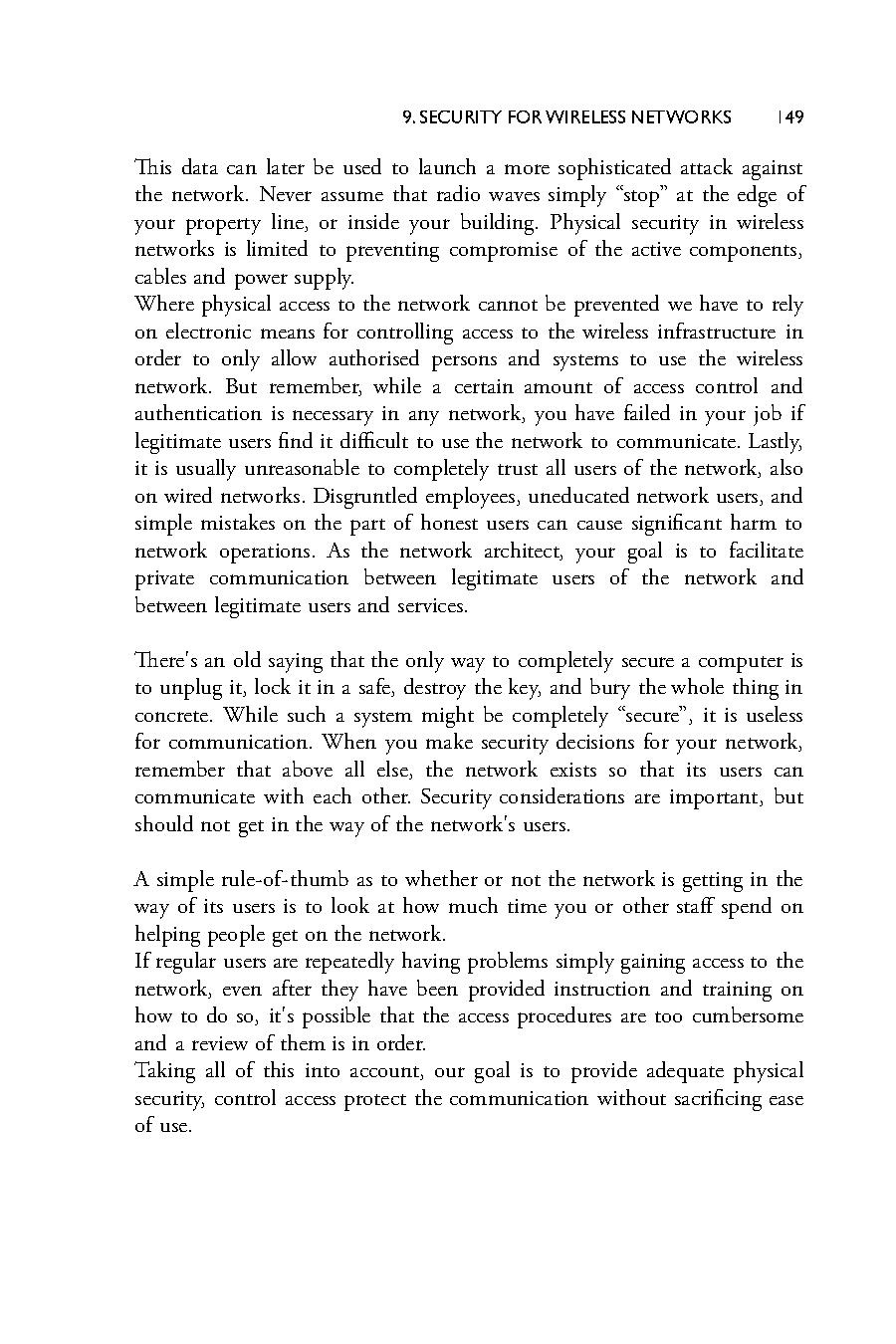This data can later be used to launch a more sophisticated attack against the network. Never assume that radio waves simply "stop" at the edge of your property line, or inside your building. Physical security in wireless networks is limited to preventing compromise of the active components, cables and power supply.
Where physical access to the network cannot be prevented we have to rely on electronic means for controlling access to the wireless infrastructure in order to only allow authorised persons and systems to use the wireless network. But remember, while a certain amount of access control and authentication is necessary in any network, you have failed in your job if legitimate users find it difficult to use the network to communicate. Lastly, it is usually unreasonable to completely trust all users of the network, also on wired networks. Disgruntled employees, uneducated network users, and simple mistakes on the part of honest users can cause significant harm to network operations. As the network architect, your goal is to facilitate private communication between legitimate users of the network and between legitimate users and services.
There's an old saying that the only way to completely secure a computer is to unplug it, lock it in a safe, destroy the key, and bury the whole thing in concrete. While such a system might be completely "secure", it is useless for communication. When you make security decisions for your network, remember that above all else, the network exists so that its users can communicate with each other. Security considerations are important, but should not get in the way of the network's users.
A simple rule-of-thumb as to whether or not the network is getting in the way of its users is to look at how much time you or other staff spend on helping people get on the network.
If regular users are repeatedly having problems simply gaining access to the network, even after they have been provided instruction and training on how to do so, it's possible that the access procedures are too cumbersome and a review of them is in order.
Taking all of this into account, our goal is to provide adequate physical security, control access protect the communication without sacrificing ease of use.
